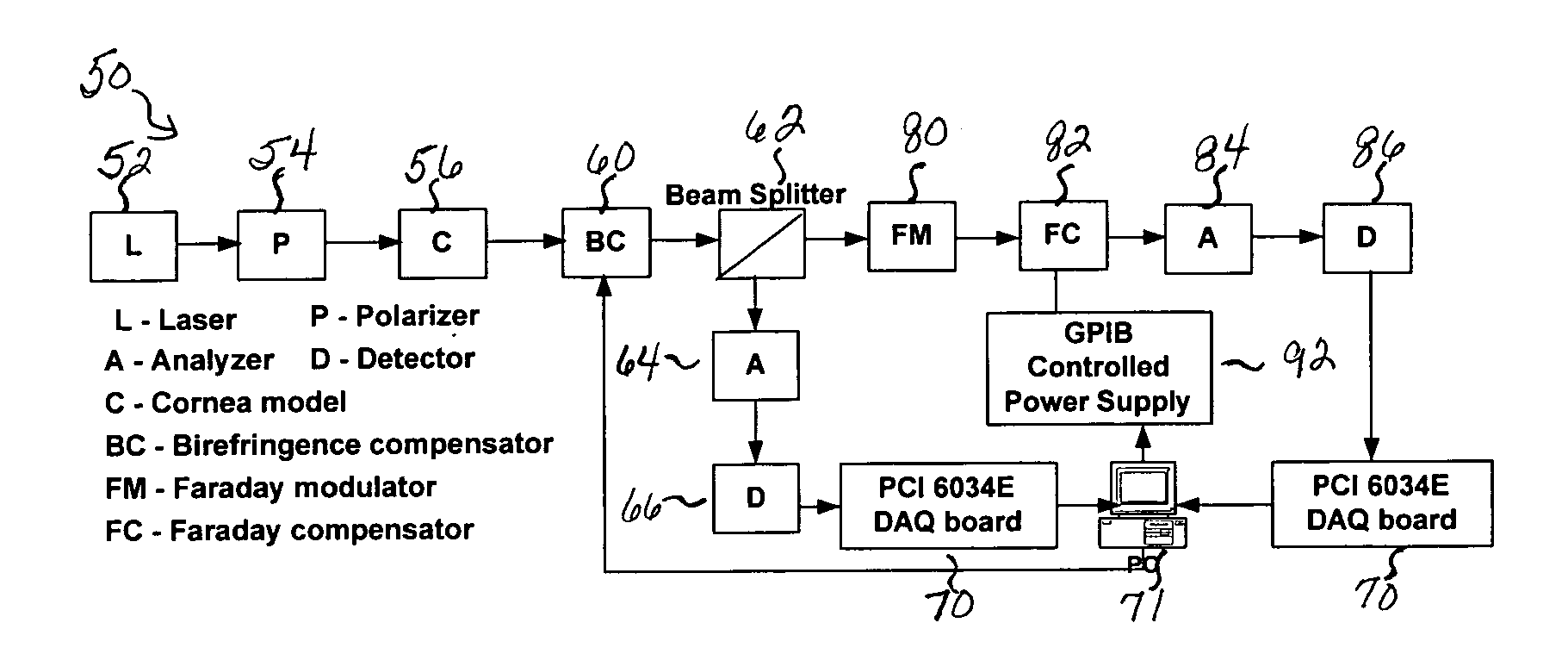Noninvasive birefringence compensated sensing polarimeter
a sensing polarimeter and non-invasive technology, applied in the field of birefringence compensating sensing polarimeter, can solve the problems of hindering the development of a viable polarimetric system, lagging stability of the open loop system, and delay in the transport time between the diffusion of glucose from the blood into the aqueous humor, so as to minimize the effects of anterior corneal birefringen
- Summary
- Abstract
- Description
- Claims
- Application Information
AI Technical Summary
Benefits of technology
Problems solved by technology
Method used
Image
Examples
example
Experimental Results with the Designed Corneal Birefringence Compensation System
[0086]Using the designed corneal birefringence compensated glucose sensing system and the method described herein, three sets of experiments each, one without birefringence compensation and one after birefringence compensation were performed with a glucose concentration range of 0–5000 mg / dl in steps of 500 mg / dl. Sample birefringence values between 3λ / 4 and λ were chosen in small increments.
[0087]The uncompensated and compensated data obtained is illustrated in Table 1 below.
[0088]
TABLE 1GlucoseUncompensated dataCompensated dataConcentration(Voltage)(Voltage)(mg / dl)Set 1Set 2Set 3Set 1Set 2Set 302.0752.0251.9973.543.53.4665000.9520.930.9423.3943.353.36510001.671.5981.593.2263.1873.18215000.420.50.352.9562.9412.93520000.5570.520.5352.8622.8352.84725000.4050.350.3432.7542.7312.72530000.8620.8510.8762.652.6482.66735000.5710.550.542.3972.372.41240000.1570.140.1252.3692.352.3345000.6710.6520.6652.2882.2842.2...
PUM
 Login to View More
Login to View More Abstract
Description
Claims
Application Information
 Login to View More
Login to View More - R&D
- Intellectual Property
- Life Sciences
- Materials
- Tech Scout
- Unparalleled Data Quality
- Higher Quality Content
- 60% Fewer Hallucinations
Browse by: Latest US Patents, China's latest patents, Technical Efficacy Thesaurus, Application Domain, Technology Topic, Popular Technical Reports.
© 2025 PatSnap. All rights reserved.Legal|Privacy policy|Modern Slavery Act Transparency Statement|Sitemap|About US| Contact US: help@patsnap.com



